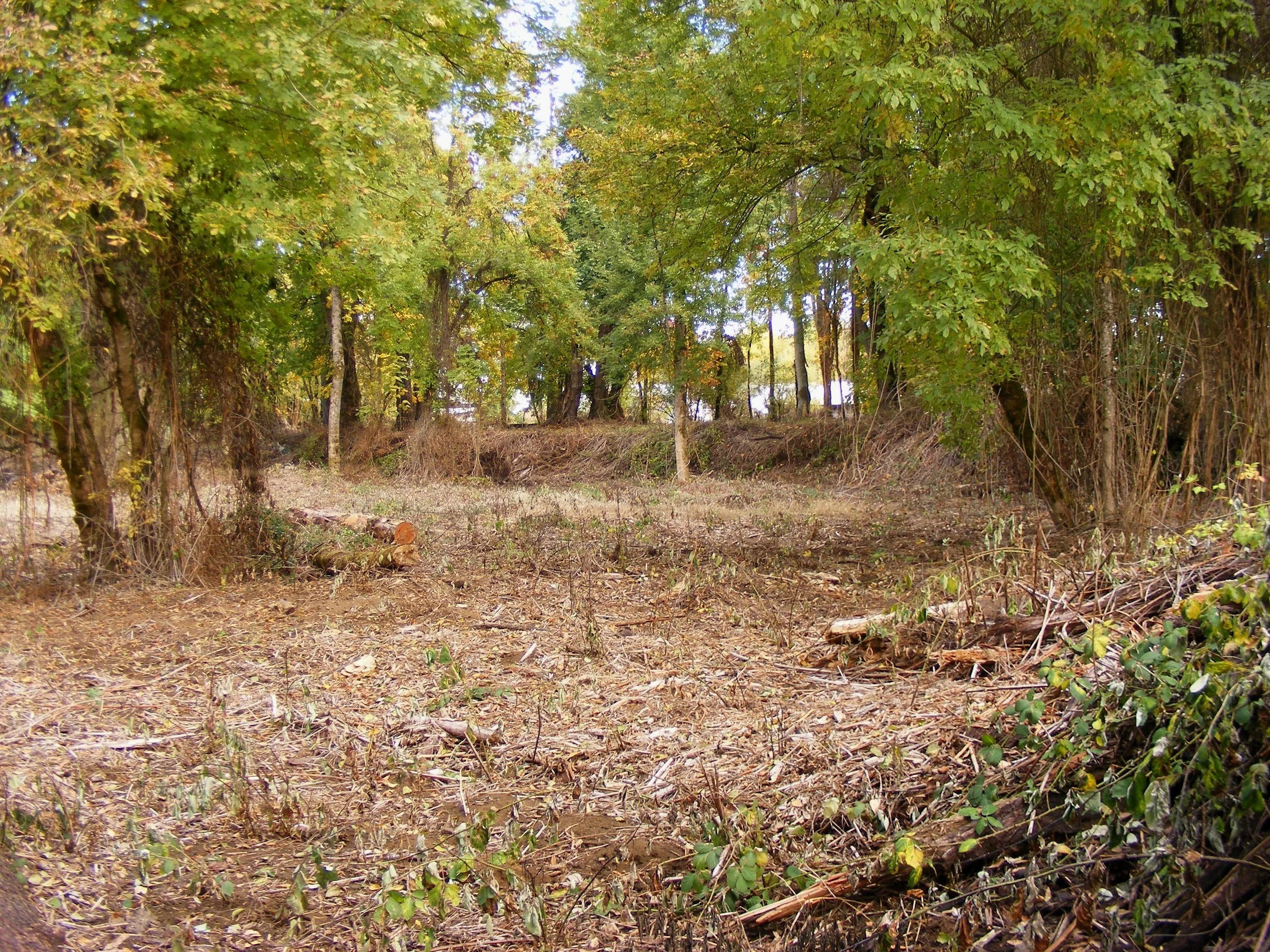Why do we need to plant trees in an existing woodland? Don’t the trees produce enough seed to regenerate on their own?
Finding baby fir trees in my flowerbeds, cottonwood seedlings everywhere, and oaks and hazelnuts planted by squirrels in my blueberry patch every year, you’d think we could just leave things alone.
In the second year of the CREP program, much of the woods looked bare, the ground stripped and compressed by equipment brought in to clear oceans of blackberries and other invasive species. Bare earth and sunlight from the gaps in the canopy provided perfect conditions for decades of weed seeds to flourish. An additional year of weed management would have been a good idea in our case, but the program dictated that we plant that year.
So we planted! Over a thousand Western Red Cedar and hundreds of Douglas Fir and Valley Pine were set in, along with understory trees and shrubs like vine maple, ninebark and spirea. The bulk of this mass planting was done by a contracted crew of tree planters, also with the help of CREP funds. The professionalism of this team was evident, as most of the seedlings survived.
The race was on for the sunlight. As our seedlings grew, they would create shade, and eventually their expanding branches would connect, forming a “closed canopy”, which in theory would suffocate the light hungry invasive species below. In the meantime, we had several years of battle ahead of us.
Which grows faster, a Douglas Fir seedling, or a blackberry bush? In the race for sun dominance, we had a lot of enemies to contend with. Canary grass smothered swaths of young trees. Wild clematis continued to snake along the ground until it found a pathway upward. Ivy, wild hops, bindweed (morning glory) — our most wanted list grew faster than the trees.
The CREP program helps to pay for chemical weed control, and realistically, it was the only way we could win this fight. Clematis is like a cancer in the soil, with roots spreading for yards in all directions. It grows in deep shade, and cut pieces will take root. It gladly takes refuge inside understory plantings and piles of debris, making eradication impossible. I don’t like using chemicals, but without them we would have just given up.
With the opening of the ground and light pouring in through the canopy, it wasn’t just weeds that sprouted. Thousands of big leaf maple and ash seedlings shot up alongside our conifers. When asked if we shouldn’t be planting some hardwoods, we laughed. Nature was doing a pretty good job by itself.


